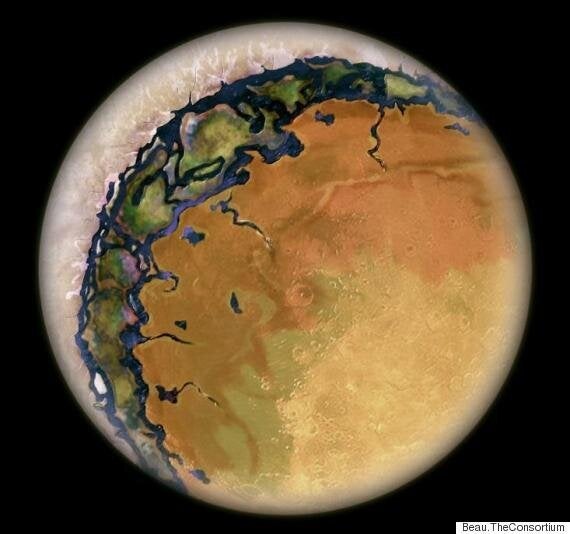The search for life on other worlds is one of the most intrinsically exciting frontiers in science — and also happens to be one of the most fascinating in contemporary astronomy.
Unfortunately it’s also one of the most difficult, and not just because alien life - if it does exist - is extremely far away, or extremely shy, or both.
The problem, some astronomers say, is that humans have a selection bias. Since we only know of life emerging on a planet like Earth, we naturally look for it by looking for planets similar to our own.
But some astronomers are warning that might not be a great idea; in fact, life might have a much better chance of emerging on a planet that looks very different indeed
A recent blog at Nautilus by astronomer Sean Raymond revisits an idea of the ‘eyeball Earth’ - a planet locked in sync around its star like the Moon is to Earth - and it’s caught the internet’simagination.
So what is an Eyeball Earth - and why is life more likely to emerge there?

Finding planets around distant stars is very, very difficult for two main reasons. First, stars are (with one exception) far away. Second, planets are both very small, and very dark. In fact pretty much the only way we can find exoplanets right now is to wait for them to pass in front of their star and shift the light in the right way to tell us how big it is, and what it might look like.
Alas, this too has problems since it only really works for planets which orbit close to their stars, or are big enough to cause a noticeable shift in the star’s light — and thus are probably unsuitable for life, since planets orbiting close to their star are usually thought to be too hot or radioactive for liquid water to exist on the surface.
The get out clause is the Eyeball Earth. In this model, if the gravity and orbit are just right, a process called tidal locking ensures that the planet orbits its star without spinning on its axis, like Earth does. Instead it stays largely in sync with the star and only exposing one face to the full force of its energy.
What this would mean is that one side of the planet would be too hot for liquid water, while the reverse would be too cold. And in the middle, the ice from the north side melts and flows over the surface, creating an oasis of liquid water, and warm (but not too warm) temperatures — essentially a mini goldilocks zone.
A 2011 study even identified a likely candidate for an eyeball world — Gliese 581g — which orbits a star roughly 20 light years from Earth. (Read the full study here).
Despite suspicions of eyeball Earth candidates, the theory is merely that right now - nowhere in our Solar System do we see something so extreme, though many moons and worlds have poles, which operate on a similar principal. But it does open up another conceptual avenue for alien life — which most astronomers believe is mathematically abundant — to emerge.
“The galaxy may be littered with wild varieties of eyeball planets! The search for life on other planets will almost certainly start with these worlds,” Raymond writes.